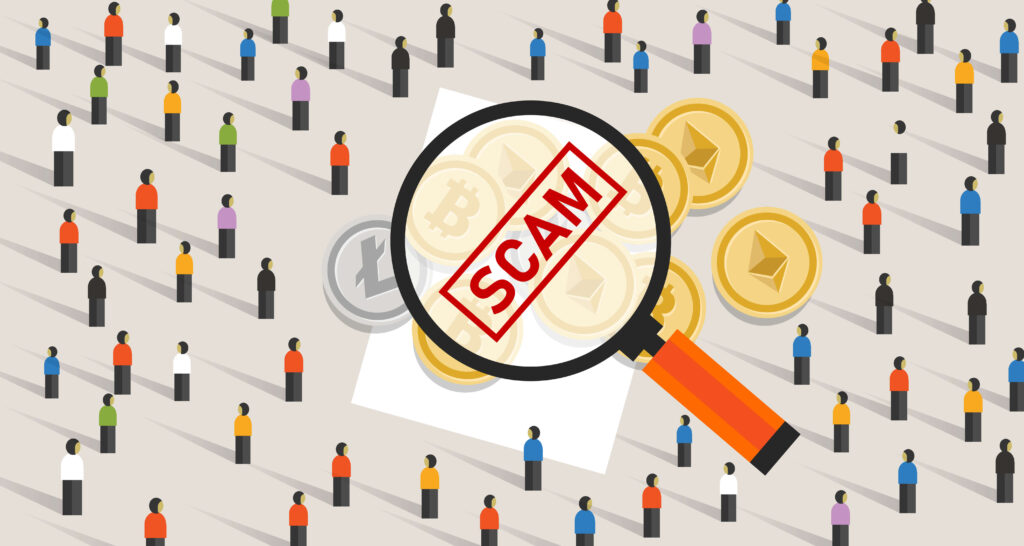The popularity and adoption rate of cryptocurrencies has seen a steady increase in recent years. There are a lot of factors that contribute to this increasing adoption rate, such as integration with existing services, NFTs, legal acceptance by some governments, and much more.
Being a relatively new asset class, crypto is arguably on track to become not only a new medium of exchange, but also serve as a digital utility to facilitate various processes, transactions, and activities globally.
Despite its practicality and proven utility, crypto is still susceptible to the one thing that plagues financial services – and that is fraud and scams. Scams in the crypto space can lead to all sorts of losses, such as breach of privacy, data loss, financial loss, and more.
The key to avoiding scams and minimising its potential impact on you as a crypto user, investor, or holder, is to be vigilant, implement best safety practices, and expand your understanding of crypto scams in general – which will be the highlight of this article.
Types of crypto scams
Before we talk about avoiding scams, it’s best we get to know the different types of crypto scams first. Below are a list of common crypto scams to be aware of.
- Get rich quick schemes: this is the most common one where unsuspectin users are often promised to gain massive gains quickly and involve all sorts of misleading messaging on social media, emails, newsletters containing free crypto advice.
- Phishing scams: this one is not exclusive to crypto but common in financial services, usually users interact or trigger the scam by clicking a malicious link in their inbox or message.
- Transfer of funds/withdrawals: requires users to send money or crypto, in order to receive a promised set of funds.
- Romance: involves taking advantage of emotional negligence to persuade users into sending money.
- Rug pulls: this usually involves a crypto project or NFT project where the holders are promised exponential growth, only to be liquidated unexpectedly – hence rug pulling the capital.
These are some of the more common crypto scams out there, but not inclusive of the entire list of scams that are known to happen. It’s important to note that if something sounds too good to be true, or remotely suspicious, it’s probably best to avoid it for your best interest.

Next we’ll briefly discuss some preventive measures and actions that you can take to avoid crypto scams.
Do your own research
Perhaps the most fundamental tip and also the most important one, is to do your own research.
If you’re reading this article – give yourself a pat on the back, because you’re one step ahead in being a more responsible crypto user and starting off your journey in the crypto space in the right way.
Doing your own research isn’t exclusive to crypto either, anything investment related should start with a bit of research. As the saying goes, knowledge is power – and it is rightfully so when it comes to avoiding scams.
Be sure to research the cryptocurrencies that you intend to invest in. Look into their historical price data, their institutional backing, who created the coin and their blockchain network, what makes them different than other crypto, what is their value proposition, and more.
Secure your crypto wallet
Buying and selling cryptocurrencies fundamentally involves storing them properly on a crypto wallet. Be sure to use a crypto wallet that you know absolutely sure is developed by a reputable company.
Learn the different types of crypto wallets and choose wisely on which one suits your needs. If you’re a beginner consider using a hot wallet such as Trust Wallet or Exodus, which have user-friendly interfaces and are relatively easy to set up.

Alternatively, you can also opt to make a wallet with an exchange such as Coinbase or Binance. If you’d rather jump straight to the most secure wallet to protect your crypto assets, consider using a cold wallet such as Ledger or Trezor.
Learn more: Top 10 Best Ethereum Wallets for Online Gambling
Best safety practices
It’s important to know the best safety practices of holding crypto so you can better protect your assets. First and foremost, make sure to take advantage of multi-factor authentication on all your accounts. This makes it significantly more difficult for hackers to access your account because they require an additional authorisation from you.
Another one is to make sure to secure your login credentials with a proper password, mixed with symbols and letters. To make things easier, it’s best if you use a password manager such as Bitwarden or LastPass which will make your life much easier and your accounts more secure.
Takeaways
As prefaced in the beginning, cryptocurrencies are increasingly popular assets that will continue to see growth in the foreseeable future.
The popularity of this new asset class means there will be even more opportunities for scammers and malicious entities that will attempt to compromise your privacy, accounts, and/or assets.
Make sure to implement the tips discussed in this article and stay vigilant to avoid potential losses that could have been avoided.
On a closing note, it’s important to keep in mind that cryptocurrencies are known for their volatility and it’s not uncommon for prices to fluctuate by double-digits depending on the market.
Always do your own research before you make any investment decision and asses your risk levels before proceeding.

